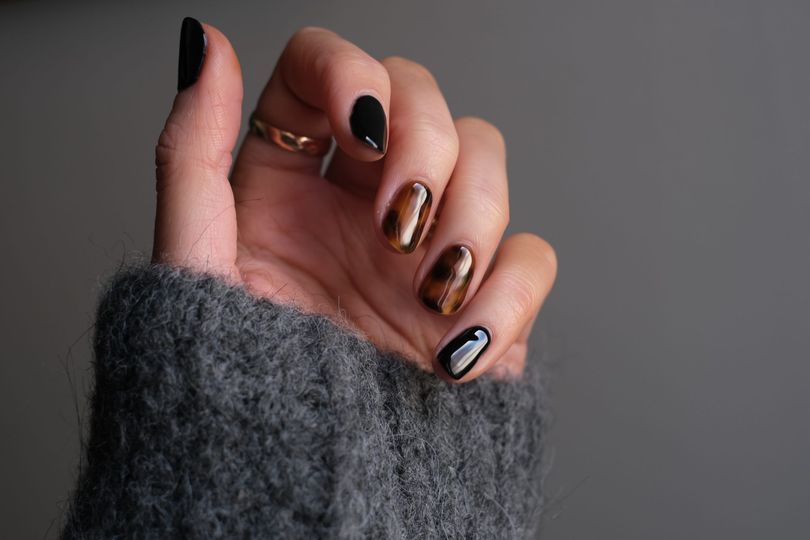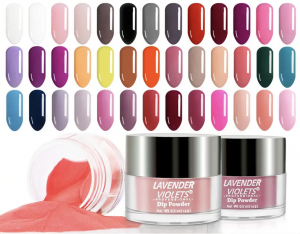What’s The Difference Between Dip Nails And Acrylics?
By Jennie Waeland, August 8 2022

When we cast our minds to manicures, the first types that pop into our heads are usually gels or acrylics. However, there are so many more techniques and aesthetics that you can opt for at your next nail appointment.
The more, the merrier. The more options to choose from, the more you can tailor your choice to best suit your beauty goals and to nurture your natural nail. So, let’s talk about dip nails.
What are acrylic nails?
Acrylic nails are a combination of powder and liquid monomer. This mixture is applied onto the natural nail using a brush to shape. The nails are then left to air dry. Acrylic nails don’t require an LED lamp to cure, unless they are gel acrylics.
Looking to get your nails done? Why not book a set of fresh acrylics with one of our expert mobile beauty therapists?
Book at-home acrylics here.
What are dip nails?
Whilst it isn’t necessarily a new trend, dip nails have made a resurgence throughout the past couple of years. Especially thanks to the rise of nail videos on social media. Dip nails lie somewhere between a classic manicure and acrylic nails. After the application of a base coat, your nails are dipped into a jar of powder. The powder being the colour you have chosen for your manicure. Afterwards a topcoat is applied, per standard procedure.
Although, most mobile beauty therapists will opt to apply the powder straight to the nail using a brush. This method is recommended in salons due to hygiene implementations. Whilst the dipping can be extremely satisfying to watch, it risks a bacterial infection transfer between customers.
What is the dip nail application process?
Fortunately, the process of a dip nail is not much more extensive than a regular manicure. Just a few more layers involved.
- Apply a base coat to the natural nail.
- Dip the nail into a jar of pigmented powder. Alternatively, push the powder mixture onto your nails using a brush.
- Brush off any excess powder from the nails.
- Repeat this process until you get your desired opacity and colour.
- Finish off with a topcoat sealant to lock the manicure in place. The nails should dry instantly.
What are the similarities between dip nails and acrylics?
They Don’t Require UV Light
Unlike gel manicures, neither dip nails nor acrylic nails use UV lamps in their process. This is simply due to their nature of their formula. This also makes them both quicker processes than gel manicures. This will shave off valuable time from your busy schedule.
The omission of UV light is beneficial as, over time, the light frequency in an LED light can risk skin ageing and damage.
What is the difference between dip nails and acrylics?
Dip Nails Last Longer
One of the biggest advantages of dip nails is their longevity. Whilst acrylic nails tend to last between two to three weeks before needing a touch-up at the salon, dip nails can last up to four weeks. Dip nails also last longer than gels.
Dip Nails Don’t Use Acrylic Nail Glue
Some acrylic nail glue can include harsh chemicals and toxins which can be harmful to your natural nail.
Dip Powder Nails Require Thinner Layers
Thinner layers are favoured in the dip powder process in order to reduce the chance of infection. The thin layers will also be less likely to damage your natural nail beds and will allow your nails more room to breathe.
Other things to consider
Dip Powder Can Contain Harmful Ingredients
Unfortunately, some of the cheaper dip nail powders may contain MMD. MMD can be very dangerous to natural nails, and is actually banned in New York City. So be sure to check the labels if you are buying your own products, and stay away from the very cheap products as this will only risk harm to your nails.
Why not try Lavender Violets Dip Powder for a non-toxic, environmentally friendly option?
Be Sure To Ask About The Brand
When comparing the safe and high quality brands, dip nails are just as healthy as classic manicures or gel manicures. As long as it doesn’t contain the dreaded MMD.
How Do You Want The Nails To Look?
If you are wanting a nail art design, then gel will be your best option. Gel is most similar to classic nail polish, but with more longevity, so nail art will look much more glossy and professional.
Dip nails tend to be thicker and therefore will be better suited to ombre nail effects or classic block colours.
Acrylic nails are great if you want to try a less opaque design, with see-through sections or lighter colours. Acrylic nails are extensions as opposed to the natural nail, so can endure much more experiment without damaging your natural nails.
Dip Nails Can Be Unsanitary
Obviously this is a bold statement, but it really depends on the salon you go to. Some therapists won’t switch out the dip powder between each appointment and you might end up with your hands in the same jar as other customers.
This is a big way for bacterial infections to be passed around between customers.
The removal processes
The removal processes of both acrylic nails and dip nails are pretty identical.
- Cut and file your nails
- Soak the nails in a bowl of acetone for 10-15 minutes
- With gentle pressure, try to lift some of the product off
- Buff the remaining product from the nails
- Shape your nails to the desired look
- Apply cuticle oil and massage the nail beds to stimulate healthy circulation
This process can be slightly time consuming in comparison to removing classic polish.
So, now that you know the main similarities and differences between dip and acrylic nails, which will you opt for next time?



